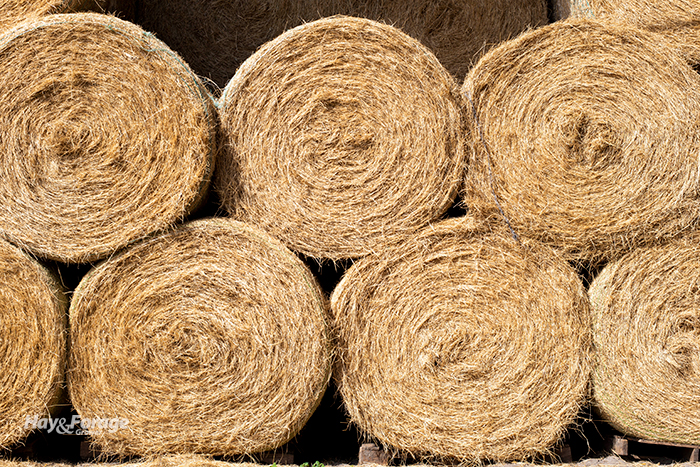
Imagine sitting in a roller coaster car chugging toward the top. When the car finally reaches its peak, it suddenly rushes downhill. The rest of the ride is full of twists and turns, including an upside down loop or two.
These attractions are not for everyone – especially not livestock. Even so, animals sometimes wind up on nutritional roller coasters. Katie Mason, extension beef nutrition specialist with the University of Tennessee, compares the ups and downs of an amusement park ride to what cows experience when fed untested hay.
“When it comes to cattle nutrition and the rumen environment, slow and steady is the way to go,” Mason states. “We want the diets of our cattle to provide an appropriate and consistent amount of nutrients according to the needs of the animal. That is why testing each lot of hay is so important.”
Hay quality can be affected by many factors, such as plant maturity stage, weather at harvest, plant species, and weed pressure. Forage from the same field and cutting, otherwise defined as a hay lot, will likely be uniform in quality. However, Mason notes test results can vary among bales made in different fields at different times.
“It makes sense that hay being cut and baled in April is probably different than hay harvested for the first time at the end of May, or hay that is cut every four weeks is different from hay that is cut every eight weeks,” Mason says.
Storing multiple lots of hay in a single barn or storage area can result in chaos when it comes to quality. Producers might feed out one cutting and start distributing hay from the next without realizing a rise or fall in the forage nutrients being provided. This can be detrimental to a herd’s health and performance, especially as cows approach peak lactation.
To illustrate this, Mason describes a hypothetical situation in which a farmer feeds hay with 57% total digestible nutrients (TDN) and 12.8% crude protein (CP), supplementing the ration with 5.5 pounds of whole cottonseed to meet the cows’ energy requirements.
Later, the farmer unknowingly unwraps bales from a different cutting with 52% TDN and 8.4% CP, yet continues feeding the same ration. This occurs as cows begin calving and are at peak lactation. As a result, the cows’ requirements are not met and their body condition starts decline.
“The cows reached the top of the peak on the roller coaster of hay quality, and now they’re falling fast,” Mason explains. “You’re feeding cattle with the greatest nutrition needs what is likely your lowest quality hay.”
In this case, the farmer would have to purchase extra supplemental feed to make up for the lack of nutrients. Mason says this can be avoided if producers manage, store, and feed hay more carefully.
“Cut hay at late boot stage when it is at optimal quality,” Mason instructs. “Store hay in a barn, or at least covered and off the ground to reduce storage loss. Test each individual lot of hay and then create a hay inventory.”
Organize hay by quality and allocate it to animals according to their nutrient needs throughout the stages of production. Wait to feed hay of the highest quality at times when cows demand the most energy.
“Be strategic with your winter feeding plan,” Mason concludes. “Create a well-balanced supplementation plan based on hay analyses. Feeding precisely the amount of nutrients needed will be the most economical way to meet the requirements of the cow herd.”

Amber Friedrichsen served as the 2021 Hay & Forage Grower editorial intern. She currently attends Iowa State University where she is majoring in agriculture and life sciences education-communications and agronomy. Friedrichsen grew up on her family’s diversified crop and livestock farm near Clinton, Iowa.

